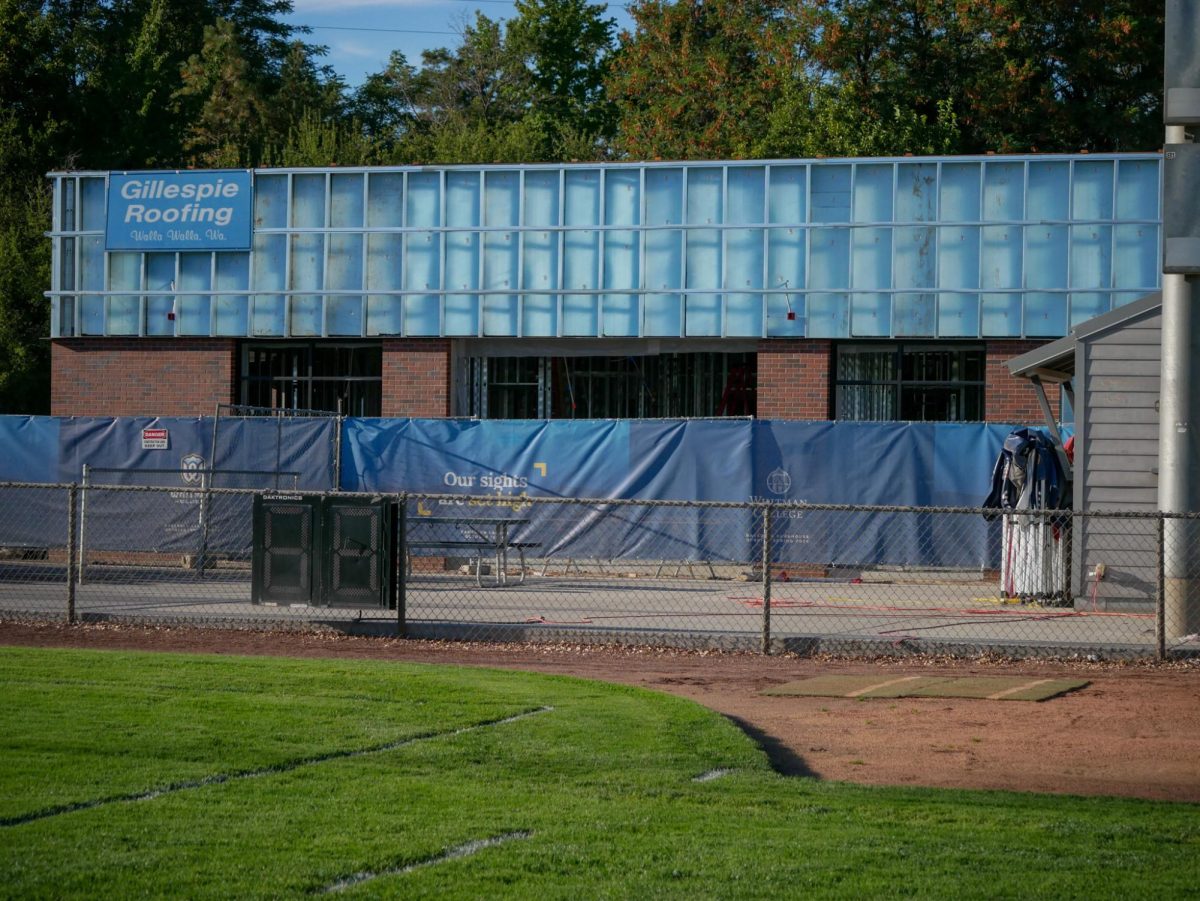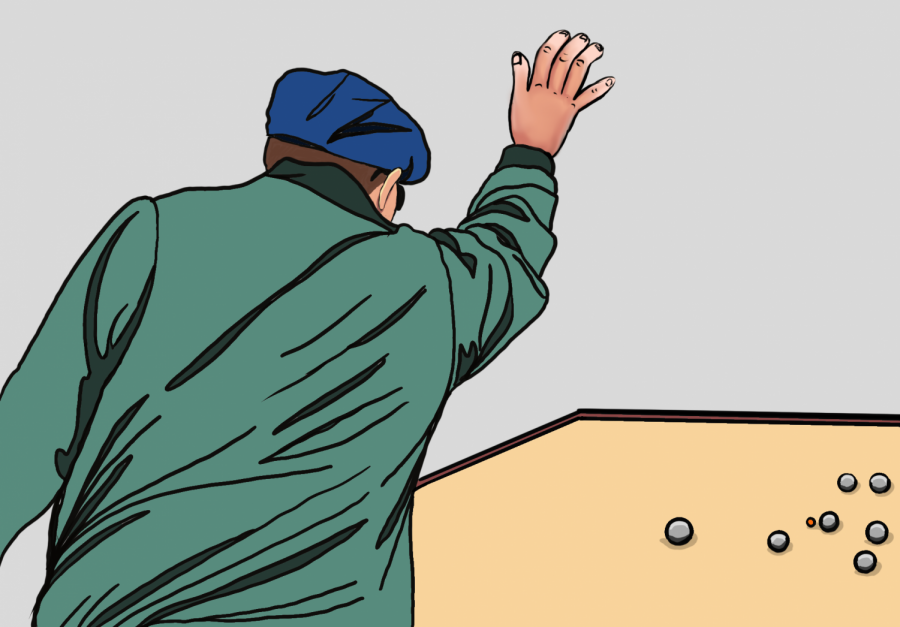For many athletes, college stands as a hurdle to the pros.
The world is chock full of outstanding athletes, all of whom deserve every award they receive and every dollar they earn. But what’s to say that they have to rush into all that? Why take a huge leap to the professional ranks when you can go to school and play collegiately in front of your friends?
Some athletes are ready, there is no doubt about that. High school All-Americans are ready. College first-years that earn First Team All American honors in leading their teams deep into the NCAA tournament or to BCS bowl victories are ready. Underclassmen who are projected to be lottery picks by draft analysts and professional teams are ready.
The problem is that those who are actually ready are few and far between. Not every 20-year-old is prepared to step into the professional spotlight, with the emotional stress and media drama that can undoubtedly emerge.
There are movie-script success stories and heart-wrenching failures. The decision is agonizingly difficult and has to happen in a very short period of time following the end of the collegiate season.
Ultimately, the decision to enter a professional draft as an underclassman is up to that student-athlete.
Early entry popularity changing face of collegiate athletics
The University of Kentucky’s men’s basketball team will start its 2012-13 campaign next November. The biggest change? The defending national champions will be without its starting five.
Last week, Kentucky sophomores Terrence Jones and Doron Lamb along with first-years Anthony Davis, Michael Kidd-Gilchrist and Marquis Teague were teammates and defending national champions. Today, they each stare down a new and individual path as each of Kentucky’s starting five declared for the 2012 NBA draft.
Let the record show, I am certainly not a UK fan. When it comes to DI basketball, I admittedly bleed the purple and gold of the University of Washington Huskies. So it does not break my heart entirely to see Coach Calipari lose his entre starting lineup and 97 percent of his team’s scoring heading into his title defense.
What troubles me is the ongoing lack of continuity year-to-year in big-time collegiate sports.
I understand undergraduate student-athletes entering professional leagues if they are ready. The problem is, the vast majority are not. Why would you sacrifice a year – and usually more – of playing with and in front of your friends, having that strong team bond where you can see your teammates in the hallways and around campus? What could feasibly make so many student-athletes ditch the “student” part after only a year or two? Why would you give up part of your collegiate experience – years you will never get back and are lucky to have in the first place – to most likely sit on the bench in the professional ranks?
Oh, yea. Money.
From professional sports analysts to the average sports fan, the argument for leaving school early to turn pro is the promise of big bucks early and the (supposedly) higher risk of injury that comes with playing amongst college athletes another year.
Sure, a student-athlete may get injured playing along side and against individuals who are not as technically skilled or as fast or physical as the professionals. But would it not be easier to, for example, get knocked out by a tackle from an NFL player than a collegiate one? Or get wiped out on a screen set by an NBA player versus someone in college? Yes, there is certainly the risk of getting injured by playing another year in the conditions of collegiate athletics. Yet there are also risks playing in the pros: injuries still happen, just differently.
Injury risks aside, there are arguably two prominent rationales for leaving college early and turning pro: the chance to play sooner with higher quality athletes and money. Putting quality teammates and competition aside leaves arguably the most lucrative aspect of the professional ranks: money.
Simply put, professional athletes in the NBA and NFL make a lot of money. A lot. Generally, underclassmen that enter the draft are high enough quality players that experts project them to be picked in the first round, if not the lottery (top 10 or so players selected), which means more money early.
In the NBA, teams can sign rookie players to two-year contracts with a team option for the following two years. This is not the strongest team-to-player commitment: the team could decide not to re-sign the player after two years, leaving a 21 or 22 year old looking for a job in a tight free agent market. However, the money is real and at least partially guaranteed.
Kyrie Irving, the No. 1 overall pick in the 2011 NBA draft, made $4.3 million in his first year. He is projected to make $4.5 million this year and $4.7 million the following year if his team (the Cleveland Cavaliers) picks up the option for his third season.
Unsurprisingly, those numbers decrease further down the draft order but the last player chosen in the first round (No. 30 overall) will still make about $850,000 in year one. Each player’s annual salary increases the following year by a percentage specified in the league’s Collective Bargaining Agreement (CBA). Theoretically, these numbers do not change in the first four years of a player’s professional career because the NBA’s new CBA – which was ratified last December to end the lockout – froze rookie salaries and percentages at the 2010-11 numbers.
If you can believe it, the NFL numbers are even bigger. The No.1 overall pick in the NFL draft can easily make multi millions in year one. In 2011, the Carolina Panthers signed No. 1 overall pick Cam Newton to a four-year, $22 million deal (all guaranteed). Seem like a lot of money for a kid fresh out of college who had never played an NFL down? Compared to previous years, Newton’s were paltry numbers. In 2010, the St. Louis Rams signed quarterback Sam Bradford for a record $78 million over six years. Bradford’s contract made the youngster the richest player in the NFL in guaranteed money and like Newton, he had never played a professional down.
Newton and Bradford declared for the NFL draft after their respective junior seasons and now stand among the richest and most well known young adults in the country. Irving entered the NBA draft after just one year of collegiate basketball.
Why not stay in school?
No doubt about it, the money is lucrative. The problem I see with early entry is that too many student-athletes are foregoing years of their college experience to take a chance on the pros. Not everyone is going to make it as a professional: injuries can shorten a career and make it impossible to sign with another team; an athlete’s performance may not earn a new contract or contract extension; or that young athlete, just 20 or 21 years old, can become overwhelmed by the bright lights and big stages, and find himself unable to replicate his collegiate success in the professional ranks.
So why not stay in school and continue your education? Why not get the chance to walk with your class at graduation and earn a degree? Why sacrifice the collegiate experience when, if you are good enough, you will get your professional opportunity at some point?
Being a DIII athlete myself, I cannot fathom why anyone would want to leave college early. I understand that for those dedicated and serious DI athletes who are professional prospects from an early age, early entry is absolutely an option. But I believe that far too many athletes are too hasty in taking that next step.
Yes, injuries are possible, perhaps even more probable.
Yes, the money is ridiculous and can set you and your family up for life.
But you only get four years of college. Why give it up early?
Disclaimer: This blog post specifically addresses the early entry process for underclassmen in men’s basketball and football. Early entry is possible in other sports, but not nearly as common. In baseball, athletes have generally already entered the MLB draft and been selected before stepping foot on a college campus, so the rules are different. On the women’s side, student-athletes usually cannot declare for a professional draft until they graduate. Occasionally student-athletes who redshirt can forego their final year of collegiate eligibility and enter a professional draft; this came to rise during the lead-up to the 2012 WNBA draft when Elena Della Donne and Skylar Diggins were eligible to declare for the draft, but chose to stay in school another year.








